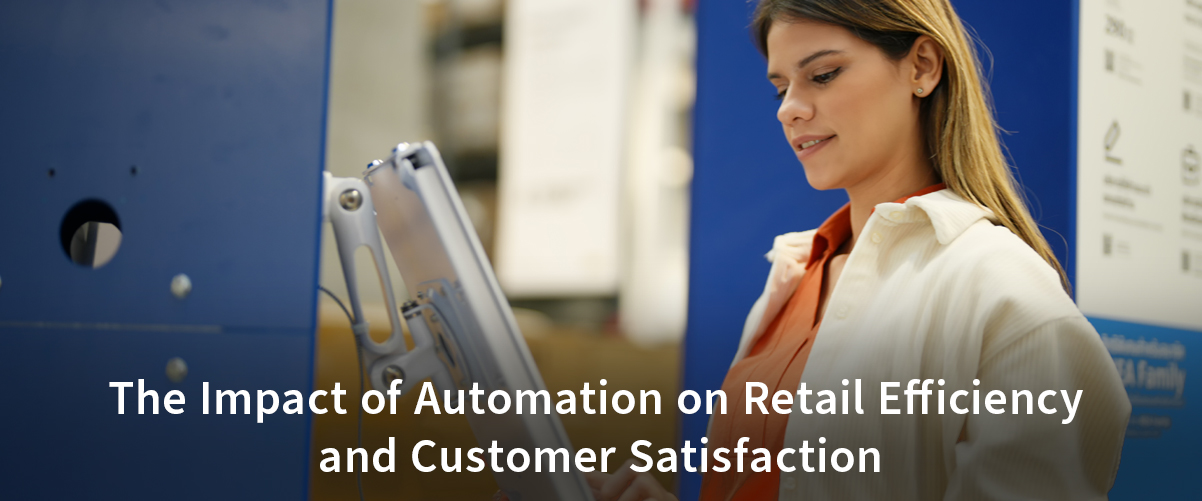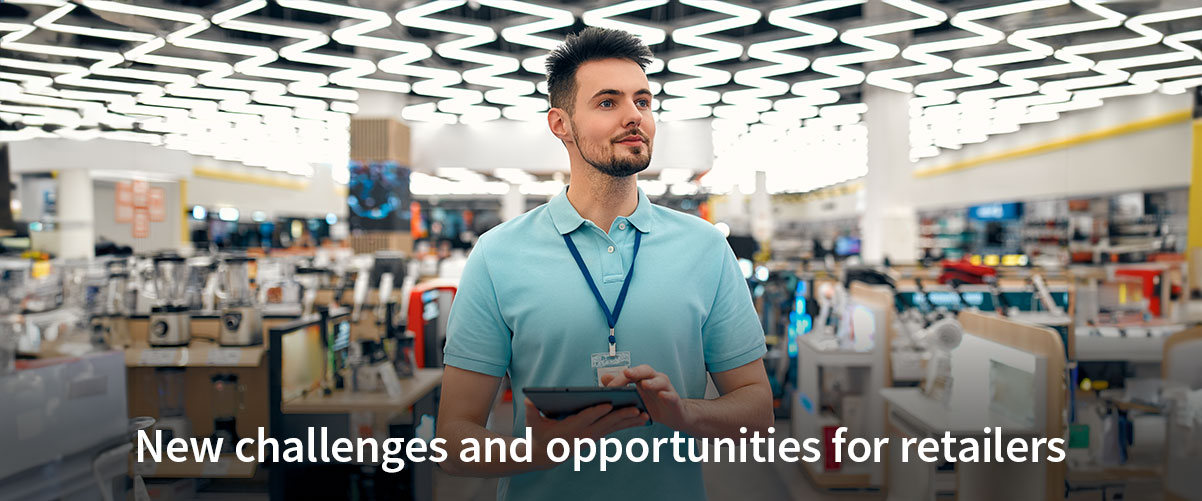
The global retail industry has undergone a major shift in the past decade, especially due to the COVID-19 pandemic. Fueled by the pandemic and other factors, including technological advancement, evolving consumer behaviours, a new business model. This means retailers and business owners should evolve as well to meet the changing trends. Yet, some are struggling to do so. In Germany, for example, online sales grew 23.0 percent per year from 2019 to 2020, while offline sales rose just 3.6 percent annually.
Key Drivers of Global Retail Growth
- Technological Advancements:
The integration of artificial intelligence, advanced data analytics, and automated systems is significantly reshaping the landscape of retail operations. Retailers are now able to offer highly personalized shopping experiences tailored to individual preferences through sophisticated algorithms that analyze consumer behavior. Furthermore, the implementation of automation in supply chain management ensures a more streamlined process, reducing delays and improving inventory accuracy. This technological revolution not only enhances customer satisfaction but also enables retailers to optimize their operations, leading to increased efficiency and profitability in an increasingly competitive market.
- e-Commerce Expansion:
The online shopping landscape is booming, and it’s transforming what consumers expect from shopping — a fast, reliable, and convenient experience. In response, retailers are enthusiastically embracing omni-channel strategies, skillfully weaving together the convenience of digital interactions with the tactile enjoyment of in-store visits. This approach creates a fluid and engaging shopping journey, allowing customers to effortlessly navigate between their favorite physical stores and immersive online environments, enhancing their overall retail experience.
- Rising Consumer Spending:
Emerging markets, illuminated by the glow of increasing disposable incomes, are sparking a vibrant demand for a diverse array of products and services. This burgeoning trend emphasizes the critical need to delve deep into the unique cultural nuances and preferences of each region, allowing businesses to craft their offerings with precision and flair to resonate with local consumers.
- Focus on Sustainability:
Shoppers are increasingly embracing eco-conscious products and championing ethical practices in their purchasing decisions. Retailers who integrate sustainable strategies into their operations are not merely satisfying these evolving consumer preferences; they are also paving the way for lasting growth in an ever-changing marketplace. This shift toward sustainability signifies a profound commitment to both the planet and future profitability, highlighting a transformative approach to business that resonates deeply with today’s conscientious consumers.
- Enhanced Customer Experience:
The transition to customer-centric strategies, fueled by cutting-edge technologies such as augmented reality (AR) and virtual reality (VR), is revolutionizing how brands connect and engage with their audiences. This dynamic shift is creating immersive experiences that draw customers into a world where they can interact with products and services like never before, forging deeper emotional connections and enriching the overall brand experience.
The Role of ETP Unify in Driving Retail Success
ETP Unify is a powerful, cloud-native Unified Commerce Retail Platform crafted to equip retailers with the tools they need to conquer industry challenges and harness essential growth drivers. By seamlessly connecting online and offline operations, it creates a harmonious experience that delights both retailers and their customers, ensuring a smooth and engaging journey through every touchpoint of the shopping experience.
1. Real-Time Inventory Management
With ETP Unify, retailers can achieve real-time visibility of their inventory across all channels. The inventory management system capability ensures that stock levels are optimized, enabling businesses to prevent overstocking or stockouts. The system’s centralized approach allows for better inventory mgmt and planning and responsiveness to changes in consumer demand.
2. AI-Driven Business Insights
ETP Unify integrates advanced analytics and AI-powered tools to deliver actionable insights. These insights help retailers understand customer preferences, predict buying behavior, and identify trends that can shape their strategies. For example, by analyzing sales data, retailers can refine product assortments and launch targeted promotions to drive engagement and revenue.
3. Seamless Omni-channel Integration
One of ETP Unify’s standout features is its ability to unify the customer experience across multiple touchpoints—be it in-store, online, or through mobile apps. This omni-channel capability ensures that customers can browse, buy, and return products effortlessly, no matter which channel they choose. Consistency across channels strengthens customer trust and loyalty.
4. Accelerated Checkout Processes
The platform offers innovative solutions like mobile POS (mPOS) and self-checkout systems that enhance the in-store experience. By reducing checkout wait times and streamlining payment processes, ETP’s unified commerce platform – ETP Unify helps create a frictionless shopping journey, boosting customer satisfaction.
5. Supporting Sustainability Goals
Retailers increasingly face pressure to adopt sustainable practices. ETP Unify aids this by offering tools to optimize resource utilization. Efficient stock management reduces waste, while the ability to forecast demand minimizes overproduction. These features align with consumer demands for ethical and eco-conscious business practices.
6. Personalization at Scale
With data gathered through customer interactions across touchpoints, ETP Unify enables retailers to personalize their offerings. From tailored marketing campaigns to product recommendations, this personalized approach enhances customer experiences, increasing retention and brand loyalty.
7. Scalability for Future Growth
ETP Unify is designed to support retailers as they grow. Its adaptable architecture can scale alongside businesses, accommodating expansions to new markets, additional stores, or an increase in online traffic. This flexibility ensures that the platform remains a reliable partner in long-term success.
ETP’s unified commerce retail platform — ETP Unify goes beyond being a technological tool; it acts as a strategic enabler that equips retailers with the agility and insight needed to excel in today’s dynamic retail landscape. By centralizing operations, simplifying processes, and enhancing customer engagement, ETP Unify empowers retailers to unlock growth and lead the industry into the future.





